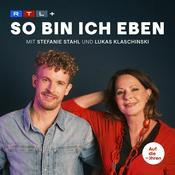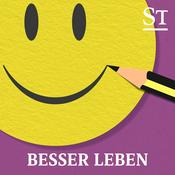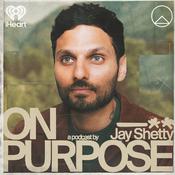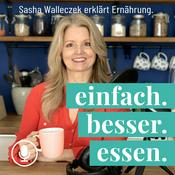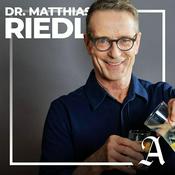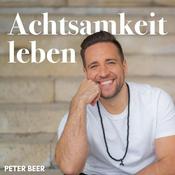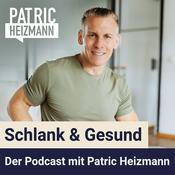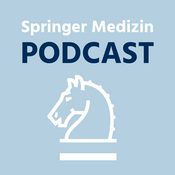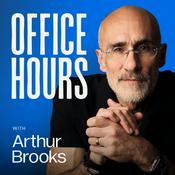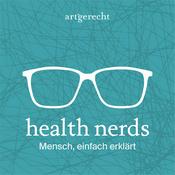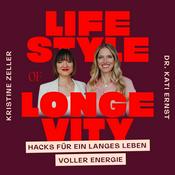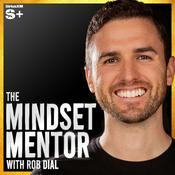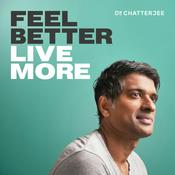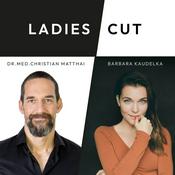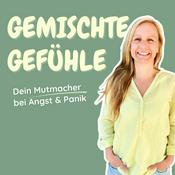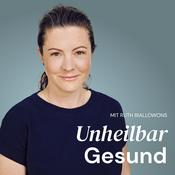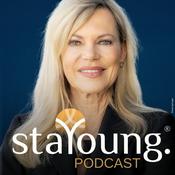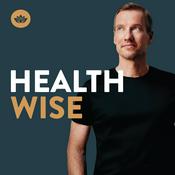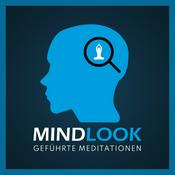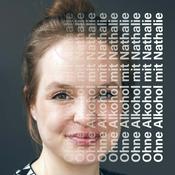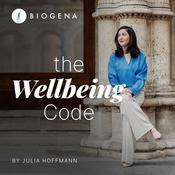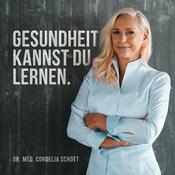78 Episoden
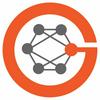
How Our Brain Drains Its Waste Products
21.12.2025 | 56 Min.
Jonathan Kipnis is a neuroscientist, the Alan A. and Edith L. Wolff Distinguished Professor of Pathology and Immunology at Washington University, St. Louis, who discovered meningeal lymphatics and has been a prolific researcher in brain drainage and the continuous immune system surveillance of the brain.I made this infographic with the help of Notebook LM to summarize many of the concepts we discussed. (Notebook LM is free and worth trying)We went over his new review with 24 co-author leading experts in the recent issue of NeuronA Clever Cover The drainage system anatomy on influx and efflux (blue arrows)The 3 ways the flow of glymphatics are modulated. I mentioned the recent studies that show atrial fibrillation, via reduced cardiac pulsation, has an effect on reducing glymphatic flow. We also discussed his recent review on the immune surveillance system in Cell:A schematic of key channels for the “faucet” and “drain” and how the system changes from healthy to central nervous system autoimmune diseases (such as multiple sclerosis) and aging with different immune bar codes.The outsized role of astrocytes in the brain, a subject of recent Nature feature, was also mentioned.Our understanding of the brain’s immune system has been completely revamped. Kipnis’s recent review in Nature Immunology highlights the critical role of the outer layers —the skull, dura and meninges—as an immune reservoir that is ready to detect and react abnormalities in the brain with a continuous “intelligence report.”Notably, Kipnis touched on lymphatic-venous anastomosis (LVA) surgery (Figure below) for Alzheimer’s disease which is popular in China, available at 30 centers in multiple cities, and the subject of multiple randomized trials as a treatment for Alzheimer’s. Trials of LVA surgery are also getting started in the United States for treatment of Alzheimer’s and Parkinson’s diseases. Here is a Figure to show the surgical anastomoses (connections) from the deep cervical lymphatics to external jugular and internal jugular veinsThis podcast was packed with insights relevant to health, spanning sleep quality, sleep medications, autoimmune diseases, and Alzheimer’s disease. I hope you find it as informative and engaging as I did.A Poll************************************This is my 4-year anniversary of writing Ground Truths. Post number 250! That’s an average of more than 1 per week, nearly 5 per month. Hard for me to believe.Thanks to Ground Truths subscribers (approaching 200,000) from every US state and 210 countries. Your subscription to these free essays and podcasts makes my work in putting them together worthwhile. Please join!If you found this interesting PLEASE share it!Paid subscriptions are voluntary and all proceeds from them go to support Scripps Research. They do allow for posting comments and questions, which I do my best to respond to. Please don’t hesitate to post comments and give me feedback. Let me know topics that you would like to see covered.Many thanks to those who have contributed—they have greatly helped fund our summer internship programs for the past two years. It enabled us to accept and support 47 summer interns in 2025! We aim to accept even more of the several thousand who will apply for summer 2026Thank you EG, Alan, Lynn L, Stacy Mattison, Jackie, and many others for tuning into my live video with Jonathan Kipnis! Join me for my next live video in the app. Get full access to Ground Truths at erictopol.substack.com/subscribe

The Story of Francis Crick, a new masterpiece biography by Matthew Cobb
07.12.2025 | 59 Min.
A recording from my enthralling conversation with Prof Matthew Cobb about the life and science contributions of Francis Crick, regarded as one of the most influential biologists of all times, along with Darwin and Mendel. As you’ll see, there’s so much more to Crick’s story than cracking DNA’s double helix structure in a matter of weeks with James Watson. Matthew Cobb, Emeritus Professor of the University of Manchester, has written several award-winning books on life science, but I think this is his most important one to date, deeply researched and a thrilling account of Crick’s life, clearing up, as best as one can, many questions, and presenting some surprises.The transcript is available (A.I. generated) by clicking at the top right.A few things we discussed—Crick’s reaction to James Watson’s bookCrick contrasted his own approach to science writing with Watson’s memoir: “The difference between my lecture and your book is that my lecture had a lot more intellectual content and nothing like so much gossip. (...) Your book on the other hand, is mainly gossip and I think it a pity in this way that there is so much of it that it obscures some of the important conclusions which can be drawn of what we did at the time”.—The Peyote Poem, by Michael McClure (part 1) that had a big influence on Crick—Crick’s 1994 neuroscience book “The Astonishing Hypothesis”“You, your joys and your sorrows, your memories and your ambitions, your sense of personal identity and free Weill, are in fact no more than the behavior of a vast assembly of nerve cells and their associated molecules.”—CrickThe book has been reviewed at Science, Nature, The Economist and many other journals. Here is a gift link to The Economist It has deservedly been named a best book of 2025 by The Guardian, The Economist, and many other media.Thank you Bruce Lanphear, Harshi Peiris, Ph.D., Elisabetta Pilotti, Allan Konopka, Stephen B. Thomas, PhD, and over 500 others for tuning into my live video with Matthew Cobb! *********************Upcoming, this Wednesday 9AM PT, live podcastI will be interviewing Dan Buettner founder of the Blue Zones Join us!**********************Thanks to US News for recently being named one of the 25 best leaders in the United Stateshttps://www.usnews.com/news/leaders/articles/best-leaders-2025-eric-topol^^^^^^^^^^^^^^^^^^^^^^Thanks to >190,000 Ground Truths subscribers from every US state and 210 countries. Your subscription to these free essays and podcasts makes my work in putting them together worthwhile.If you found this interesting PLEASE share it!Paid subscriptions are voluntary and all proceeds from them go to support Scripps Research. They do allow for posting comments and questions, which I do my best to respond to. Please don’t hesitate to post comments and give me feedback. Let me know topics that you would like to see covered.Many thanks to those who have contributed—they have greatly helped fund our summer internship programs for the past two years. It enabled us to accept and support 47 summer interns in 2025! We aim to accept even more of the several thousand who will apply for summer 2026. Get full access to Ground Truths at erictopol.substack.com/subscribe

Jennifer Gunter & Eric Topol: Discuss Women’s Health and Recent Changes by FDA for MHT
28.11.2025 | 1 Std.
A couple of weeks ago, the FDA Commissioner published a WSJ oped “The FDA Liberates Women’s Hormone Replacement Therapy” (←gift link) and, with other FDA colleagues, a JAMA essay entitled “Updated Labeling for Menopausal Hormone Therapy” (open-access). That change, and the data cited, led to a series of articles in the days that followed, such as at STAT News “FDA reverses decades-old warning on hormone therapy products for menopause. Agency says the treatments o!fer heart, brain, and bone health benefits” and at the Washington Post “The FDA finally corrects its error on menopause hormone therapy. Women have been needlessly scared away from effective treatments.” If you read through these links, you’ll be confused. Does MHT have proven cognitive benefits? What about a study from 1991 that showed ~50% reduction of fatal heart events with MHT? Or the 35% decreased risk of Alzheimer’s disease? Or the breast cancer increased risk attributed to medroxyprogesterone acetate?I turned to my go-to gynecologist truth teller, Dr. Jen Gunter, to get her review of the evidence. This is a complex topic, with old data from the 2002 Women’s Heath Initiative (WHI), new reports since, population level analysis, changes in preparations of MHT including local delivery, and much more.Here is our conversation which isn’t just about MHT but includes “Big Wellness” marketing direct to middle aged women, the new FDA approved drug for hot flashes, the $14 million cut of the NIH’s Office of Women’s Health , marked increase in philanthropic support of women’s health research, the Surgeon General nominee, ovarian failure, and a lightning round on proven benefits of MHT.Here’s a brief clip on her views of the women’s health “wellness” predatorsWe also discussed the reasons for Dr. Gunter’s planned move next year back to Canada after practicing gynecology for 3 decades in the United States. I referred to a recent GT I wrote about the WHI and the potential favorable impact of MHT on the immune system, as suggested by new data on organ clocks. That finding, which has been replicated, may be linked to healthy aging, extending healthspan.****************************Thanks to the >190,000 Ground Truths subscribers from every US state and 210 countries. Your subscription to these free essays and podcasts makes my work in putting them together worthwhile.If you found this interesting PLEASE share it!Paid subscriptions are voluntary and all proceeds from them go to support Scripps Research. They do allow for posting comments and questions, which I do my best to respond to. Please don’t hesitate to post comments and give me feedback. Let me know topics that you would like to see covered.Many thanks to those who have contributed—they have greatly helped fund our summer internship programs for the past two years. It enabled us to accept and support 47 summer interns in 2025! We aim to accept even more of the several thousand who will apply for summer 2026.Thank you Debbie Weil, Cynthia Brumfield, Sara Garcia, Harshi Peiris, Ph.D., Liane Moccia, and over 1,000 others for tuning into my live video with Dr. Jen Gunter! Join me for my next live video in the app. Get full access to Ground Truths at erictopol.substack.com/subscribe

Dr. Susan Monarez—Former CDC Director, First Live Interview
08.11.2025 | 54 Min.
Dr. Susan Monarez was the first CDC Director to be confirmed by the Senate and served from July 31, 2025 – August 27, 2025. Because she refused to give approval to new vaccine recommendations without ever seeing them or their evidence and firing scientists without cause, she was fired. In my view, she’s a hero for standing up for science and speaking truth to power.In her first live interview since leaving the CDC, we review her background. That includes growing up in rural Wisconsin and getting her college and PhD education at UW-Madison, the latter in microbiology and immunology. She then went on to 18 years of government service with an extensive portfolio of jobs and management at BARDA, the White House, ARPA-H, and others, before becoming Acting Director of the CDC in early 2025.We discussed the horrific CDC shooting on August 8th, days after she started. Then we reviewed a conversation that we had on August 19th in which she laid out her exciting vision for the future of CDC, emphasizing the goal of prevention (BTW, CDC stands for Centers for Disease Control and Prevention) and asked me to help as an advisor. At the time, she was well aware, with growing tension, that her tenure at CDC might be limited. I asked about her perspective for the jobs of 4,300 people at CDC who have been terminated, which account for more than 1/3rd of the workforce, no less the gutting of the budget.Then we got into what she learned from this ordeal and her plans for the future, which includes a very ambitious initiative: 90/90/2035. As you’ll see from our conversation, Dr. Monarez is exceptionally resilient and an optimist. She’s got lots to do in the years ahead to carry out her mission of promoting human health!Dr. Monarez just started a Substack The Road Best Traveled so you can follow her there. It was a real privilege for me to do this interview with her. In deep admiration of her willingness to not only take on the job of CDC Director in tough circumstances, her professionalism during testimony at the Senate committee hearing, her impressive yet unrealized vision for transforming the CDC, and refusing to cave to immense pressure from the HHS Secretary to move ahead with his agenda. Thank you Julie, Stephen B. Thomas, PhD, David Dansereau, MSPT, Dr. Sara Wolfson, Vau Geha, and >500 others for tuning into my live video with The Road Best Traveled! Thanks for being a Ground Truths subscriber! Please spread the word. Get full access to Ground Truths at erictopol.substack.com/subscribe

Seth Berkley & Eric Topol - Discuss Fair Doses Book
05.11.2025 | 47 Min.
Get full access to Ground Truths at erictopol.substack.com/subscribe
Weitere Gesundheit und Fitness Podcasts
Trending Gesundheit und Fitness Podcasts
Über Ground Truths
Höre Ground Truths, So bin ich eben! Stefanie Stahls Psychologie-Podcast für alle "Normalgestörten" und viele andere Podcasts aus aller Welt mit der radio.at-App

Hol dir die kostenlose radio.at App
- Sender und Podcasts favorisieren
- Streamen via Wifi oder Bluetooth
- Unterstützt Carplay & Android Auto
- viele weitere App Funktionen
Hol dir die kostenlose radio.at App
- Sender und Podcasts favorisieren
- Streamen via Wifi oder Bluetooth
- Unterstützt Carplay & Android Auto
- viele weitere App Funktionen


Ground Truths
App laden,
loshören.
